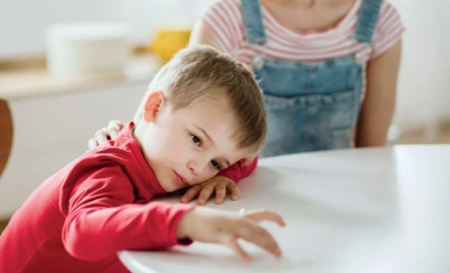Help them make a smooth transition
It seems that once you become the parent of a school-aged child, you mark the passage of time less by the beginning of the calendar year and more by the first day of school. For each of us this brings a variety of feelings – excitement, fear, nervousness, apprehension, anticipation, relief. It’s a time of transition – getting back into or starting new routines, meeting new teachers, saying goodbye to old friends and looking forward to new ones. For some, it is new schools and maybe even moving to a new area.
There is a lot of change on top of all the demands of school life and the new expectations our children are required to adjust to. Children who struggle with attention disorders may find the transition to be a bit more challenging.
The following tips are offered as a way to help ease the transition back to school for both you and your child regardless of whether they are coping with an attention problem or not.
Get to know your child’s teacher.
Next to you, your child’s teacher is often the most important person in your child’s life. Working together and modeling a positive relationship with the teacher will support your child’s success and their own perspective of the teacher.
Children thrive on predictability!
Set up routines that make sense for your family. Having a chore list at home where your child is accountable to outcomes transfers to success in school when the teacher gives the child checklists or step-by-step instructions.
Modeling and reinforcing behaviors at home that the child will see at school is critical to their ability to transfer the skills needed for success in learning.
If your child is not following through at home, there is no reason to believe they will follow through at school; independence at school starts with independence at home, and practice and modeling are key.
Children benefit from calm, structured, and supportive environments.
While we want that for our children at school, this environment needs to be coming from home as well.
Keeping mornings calm and structured sets your child up for learning success as there is a more gentle and peaceful transition into the school day.
Help your child get ready the night before, and model it by getting ready yourself – make lunches, pack backpacks and put them at the door, and lay clothes out. This helps reduce the morning rush and the inevitable stress that goes with it.
Let your child help make lunch the night before.
This will give them a sense of anticipation for the next day and provide a forum to talk about upcoming events or concerns.
This will also help your child begin to develop independence, advocacy skills (for what they want to eat, at least), and hopefully reduce food waste!
“Next to you, your child’s teacher is often the most important person in your child’s life.”
Get back into the routine early; give yourself a week or more.
Mimic school bedtimes and awake times to support a smoother transition at the beginning of the year.
Make sure your child is eating a healthy breakfast so they have energy to think and cope with challenges throughout the day.
Consider their medication.
Children are continually growing and changing. For those who might be gifted with ADHD and who take medication, start considering and monitoring dosages one to two weeks before school starts. Be open and positive with the teacher about your child’s strengths and needs.
The teacher is there because they want to help. Working to create a team with the teacher is the best support for your child.
Teachers love information about children as it supports their knowledge of and intervention plans for students. Information helps teachers cultivate the most supportive learning environment possible for your child.
Have a meeting with teachers around the end of September or early October to gain feedback on how medications are supporting your child.
Consider a new fidget.
Many children use fidgets to help them with focus (whether they have a diagnosis or not). A fidget is a strategic tool to support your child’s ability to remain calm and access their higher order brain.
Fidgets are not a ‘toy’; they are a ‘tool’. If your child benefits from fidgets to support their attention, it is important to work with them to find one fidget that works well and then take that one tool to school.
Having too many fidgets can be distracting and counterproductive!
Help your child get excited by involving them in the back-to-school shopping and planning.
Think about creating to-do lists and holding your child accountable in ensuring each task gets done. This translates into the classroom as well.
Help your child make a list or talk about all the things they’re looking forward to this year.
At the same time, review all the good things that happened last year. Begin the year in a strong way by helping your child develop a positive attitude and growth mindset before they walk through the school doors.
Help your child get organized (and stay that way).
Minimizing the amount of ‘stuff’ in the child’s space, labeling materials, color coding, having designated spaces for items, and using organizational bins can be particularly supportive.
It’s less stressful to deal with little things before they get out of hand.
And remember, a cluttered space creates a cluttered mind.
Be involved at your child’s school.
Your child is proud to have you there and it shows them you think school is important.
If the school is new, if possible, tour the school and visit the teacher before school starts so your child becomes somewhat familiar with the new setting and has a sense of what to expect.
Make a regular time and place for schoolwork.
Get into a daily habit, even if it’s only 15 minutes a day. While some children do well completing homework in their bedrooms, it can be a disaster for others.
For those who need more structure and may have attention difficulties, the lack of monitoring and check-ins that come from a parent close by (perhaps at the kitchen table) leads to a lot of distraction and an unproductive, and ultimately frustrating, time for the child.
Clear instructions, examples provided of what is expected, and having information right in front of the child will lead to stronger success in accomplishing tasks.
Children need feedback to help guide their progress and behavior.
It is much more effective to focus on and put energy into providing positive feedback on what is working well rather than what is not. What we focus on and give attention to tends to reinforce that behavior, which is why focusing on what we are wanting to see or are happy to see, will lead to more of it.
Above all, celebrate and enjoy each day. No matter what has happened before, each year is a new beginning…a fresh start.
